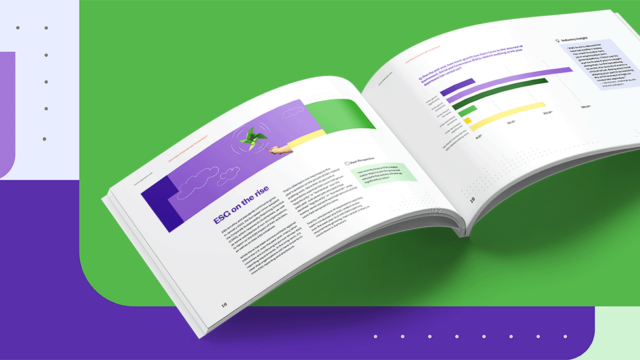
Top Four Internal Controls to Prevent Fraud
Four key internal controls to prevent fraud and maintain the integrity of your organization.
Fraud is everywhere, and unfortunately, no company is immune to its threat. However, internal auditors can help protect their organizations by implementing robust internal fraud controls. By doing so, your level of fraud detection will improve. You can implement these prevention controls in various ways.
Read on to learn about the various types of internal controls over financial reporting that can protect your company from fraud.
What is the purpose of internal controls?
Fraud is one of the greatest risks to governance that organizations face. This risk holds across industries and jurisdictions. In fact, the 2022 Association of Certified Fraud Examiners (ACFE) global report on fraud suggests trillions of dollars in losses are caused by fraud.

Internal controls are key to preventing fraud at your company. Internal controls comprise the auditing and accounting processes used in your financial department to ensure regulatory compliance and reporting integrity. These controls help you comply with necessary laws and regulations, but they also help you prevent and lower your company’s risk of fraud.
Internal controls can also boost organizational efficiency by ensuring employees follow policies, mind budgets, highlight capital shortages and create accurate reports for your company’s leadership roles.
Common types of fraud in business and accounting
What types of fraud might your company be at risk for? Occupational fraud falls into three main categories:
- Asset misappropriation
- Corruption
- Financial statement fraud
Although offenders sometimes only commit one type of fraud, they often carry out multiple forms of it. The 2022 ACFE report found that 40 percent of cases involved more than one category of occupational fraud.
The ACFE found the following occurrences of fraud across the three categories:
- Asset misappropriation alone: 47 percent
- Asset misappropriation and corruption: 32 percent
- Corruption alone: 12 percent
- Asset misappropriation, corruption and financial statement fraud: five percent
- Asset misappropriation and financial statement fraud: two percent
- Financial statement fraud alone: one percent
- Corruption and financial statement fraud: one percent
A typical fraud case lasts approximately one year before it is detected, resulting in a median loss of $117,000.
The five highest median losses according to industry are:
- Real estate: $435,000
- Wholesale trade: $400,000
- Transportation and warehousing: $250,000
- Construction: $203,000
- Utilities: $200,000
Implementing certain elements of internal control can help your business prevent these types of fraud.
Internal controls and fraud prevention: The top four internal controls in accounting
Preventing fraud is often less expensive than dealing with the aftermath of victimization. Having a solid internal control framework is vital to preventing fraud. Investing in internal controls can save your business money while increasing efficiency. Internal controls accounting can help your organization minimize its risk and actively prevent fraud.
Implement the following internal controls to prevent theft and costly losses that could hurt your company.
1. Internal and external audits
Internal and external audits can investigate whether fraud is present or at risk of developing within your business. Once your audit is completed, you can manage your company’s risk of fraud by utilizing tools for risk assessment and audit planning.
An internal audit should provide you with the following:
- Identification of potential danger areas at risk of fraud
- Understanding of the elements of fraud that put your company at risk
- An outline of the trends and scenarios associated with each type of high-risk fraud potentially associated with your business
- Evaluation of the present fraud indicators.
- Determination of whether further investigation or action is necessary
- Review of the controls’ effectiveness in detecting and preventing future fraud risks
While internal audits concentrate on improving performance, external audits strive to prove the truth and accuracy of your company’s financial statements.
2. Segregation of duties
The separation of duties is an important internal control process. When organizations implement the segregation of duties, they ensure that one person does not have sole control over the lifespan of a transaction. This means that different duties are assigned to different people to encourage oversight and accuracy. These duties include:
- Initiating the transaction
- Approving the transaction
- Recording the transaction
- Reconciling the transaction
- Handling the asset
- Reviewing the report
There should be at least two people assigned to all financial transactions.
Segregation of duties is essential to internal control. This separation reduces the risk of inappropriate and erroneous actions. By separating functional responsibilities amongst units, you can ensure that errors are not made without another person discovering them.
The separation of duties also acts as a fraud deterrent. When you effectively segregate duties, fraud cannot be conducted alone. A successful fraudulent act requires collusion or the help of another person.
3. Anti-fraud policies and ethical code of conduct
A strong code of conduct is an invaluable anti-fraud control. It provides a clear roadmap of acceptable and unacceptable behaviors. Defining expectations can help safeguard your company’s reputation while avoiding expensive regulatory and legal issues.
A robust code of conduct will detail your company’s mission, vision, principles, values and commitments. It does this while linking them to your required standards of moral and ethical behavior in the workplace.
Your code of conduct should include the following to guide internal behavior:
- Anti-fraud policy
- Incident response plan
- Whistleblower policy
- Code of business ethics
- Financial and fiscal policies regarding disbursements and reimbursements
Clearly articulating these policies helps set internal expectations and serves as a benchmark to evaluate behavior and hold non-compliant employees accountable.
4. Accurate and up-to-date financial reporting
Accounting records and financial reporting increase visibility and make it easier for your business to audit various activities and transactions. In turn, ease of auditing helps reduce fraud.
Best practices for minimizing fraud include the following internal controls:
- Document all sales receipts
- Document all bank account deposit preparations
- Use “for deposit only” stamps on incoming checks
- Avoid signature stamps
- Require two or more signatures on large checks
- Document checks on a log
- Require supervisor approval of employee timesheets before payroll processing
- Examine canceled checks to ensure third parties are legitimate
These best practices can help reduce asset misappropriation and other types of fraud by creating audit trails.
Reduce and detect fraudulent activities with an internal audit solution
It is never too late to start thinking about fraud prevention. Reduce fraud in your organization by implementing a proven internal audit solution. Internal audit and risk management software can help you get more out of your internal audit function.
Caseware’s internal audit software can help you identify performance issues quickly and accurately. Our highly collaborative and intuitive software amplifies team efficiency, allowing your teams to work faster and more effectively while protecting your company from fraud.








